Rear-end collisions happen a lot. They leave people wondering who’s to blame. Figuring out who is at fault is essential for insurance and to help avoid future accidents. This article explains how crashes determine fault.
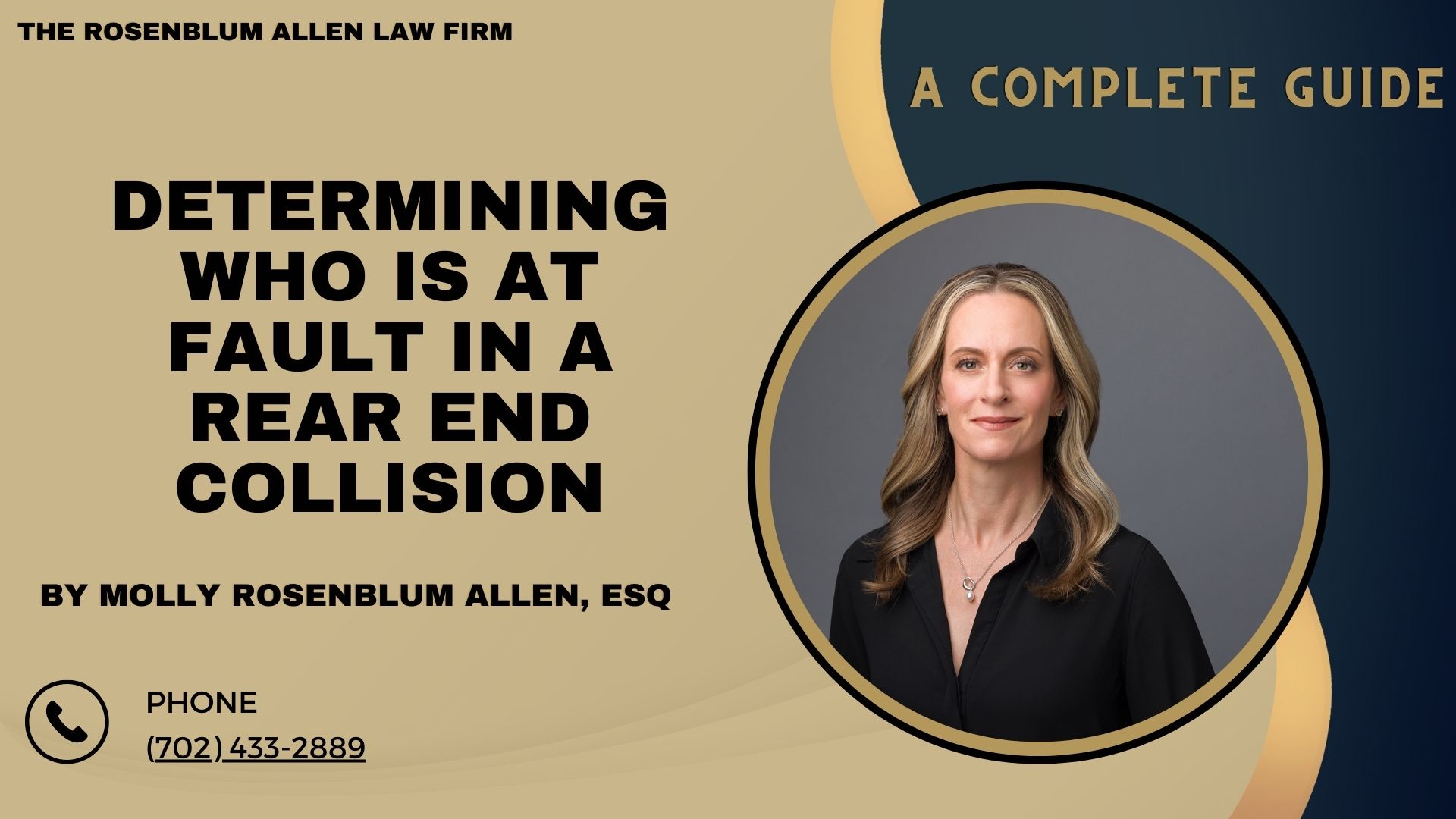
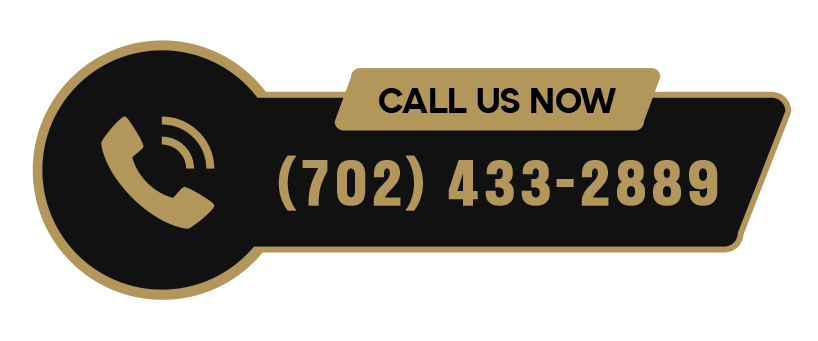 Understanding Rear-End Collisions
Understanding Rear-End Collisions
When one car hits the back of another, it’s a rear-end collision. These crashes seem simple, but many factors can cause them. Let’s look at what they are and how they happen.
Common Scenarios
Traffic jams: Cars stopping quickly can surprise drivers.
Red lights: Drivers may brake hard for lights.
Highways: Not keeping enough distance at high speeds is risky.
Bad weather: Slippery roads make stopping hard.
Factors Contributing to Rear-End Collisions
A few reasons these accidents occur include:
Distraction: Not watching the road can cause crashes.
Speeding: Going too fast makes it hard to stop.
Tailgating: Not leaving enough space to stop safely.
Bad weather: Rain and snow make roads slippery.
Car problems: Sometimes the brakes don’t work right.

General Rules of Fault in Rear-End Collisions
Usually, the driver who hits the other car from behind is at fault. We expect drivers to leave enough space to stop safely.
The Presumption of Fault
This idea comes from two basic rules:
Keep a safe distance: You should be far enough to stop safely if needed.
Pay attention: Adjust your speed and distance for the traffic and weather.
Exceptions to the Rule
Sometimes, the front driver is at fault, for example, if:
They reverse suddenly.
Their brake lights don’t work.
They cut off another car without leaving space.
The Role of Negligence
Being careless on the road can lead to accidents. Blame drivers for the crash if they do not act safely.
How Negligence Affects Fault Determination
Duty of care: Drivers must be careful around others.
Breach of duty: Not keeping a safe distance is being careless.
Causation: This carelessness must cause the crash.
Damages: The crash must result in damage or injury.
Comparative and Contributory Negligence
States have different rules on how fault affects compensation.
Comparative negligence: Both drivers can be blamed, affecting how much money they get.
Contributory negligence: If the hurt driver is also at fault, they might not get any money.
To understand who is at fault in a rear-end collision, you must look at the accident’s details. This guide helps drivers after a crash, ensuring a fair look at who is to blame.
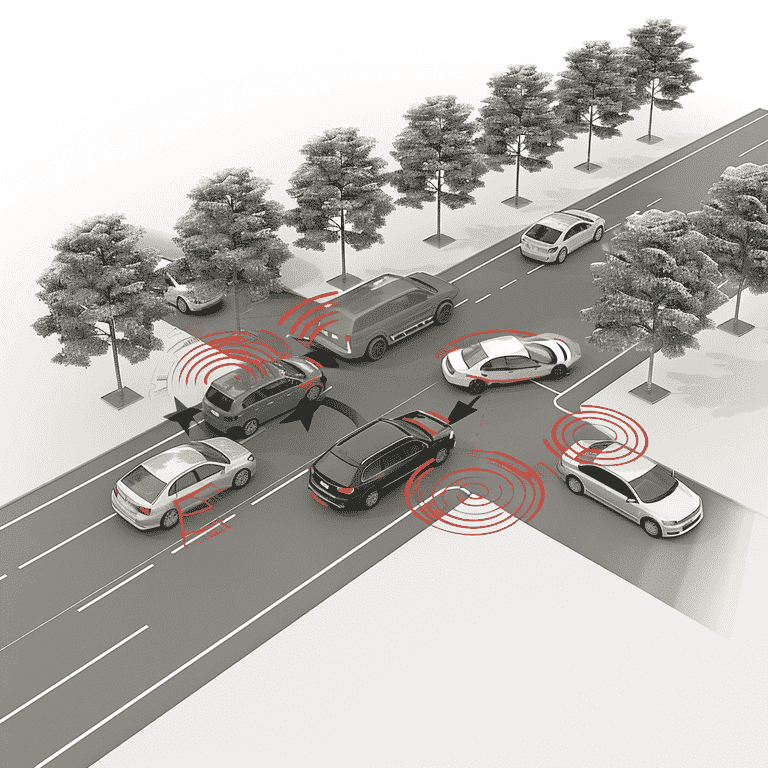
Determining Who Is at Fault in a Rear-End Collision
Finding out who caused a rear-end crash involves looking at the details of the accident.
Investigating the Crash
Professionals check:
How and where the accident happened.
The weather and road conditions.
Actions of the drivers and the state of the cars.
Types of Evidence
To decide who is at fault, we use:
Photos: Show damage to the cars.
People’s stories: What drivers and witnesses say happened.
Videos: Footage from traffic or dash cams showing the crash.
Traffic Laws Matter
We see if anyone broke driving rules, such as speeding or not leaving enough space.
Police Reports Are Key
These reports have details like:
The crash site.
What people involved said.
The police officer’s view on who is at fault.
Witnesses Help a Lot
What people who saw the crash say can make things more transparent.
Video Evidence Is Powerful
Videos can directly show:
The crash is happening.
Traffic flow.
Possible unsafe driving.
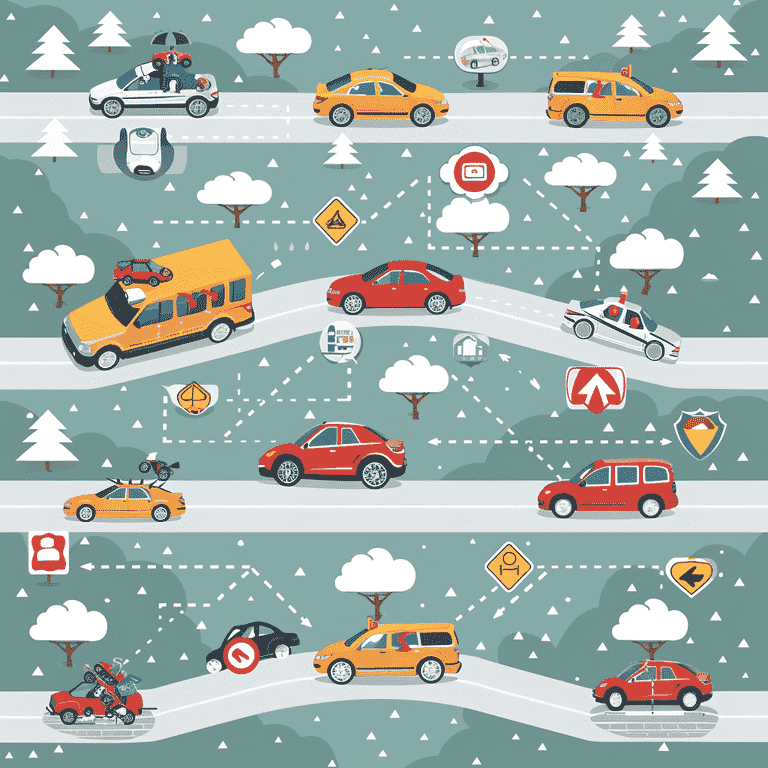
Common Reasons for Rear-End Crashes
These crashes often happen because of:
Driving too close: Not enough space to stop.
Distraction: Not looking at the road.
Sudden stops: Quick braking.
Poor road conditions Make stopping harder.
Car issues: Brake problems, for example.
How Reasons Affect Who’s at Fault
Why the crash happened helps us figure out who is to blame. For instance, if a driver was tailgating, they’re usually at fault.
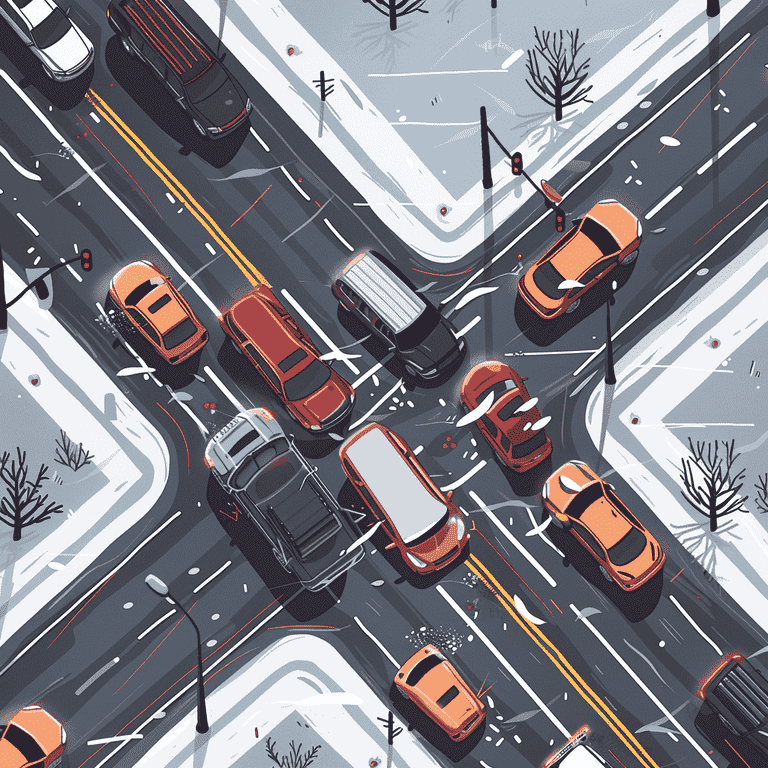
Exceptional Cases in Rear-End Crashes
Some situations make deciding fault tricky.
Multi-Car Crashes
It’s harder to find out who started it when several cars crash. Everyone’s actions count.
Sudden Lane Changes
If a car cuts in and brakes, causing a crash, the cutter could be at fault.
Bad Weather Crashes
All drivers need to be extra careful in bad weather. Crashes in these conditions might mean someone needed to be more thorough.
Multi-Car Crash Fault
In pile-ups, we look at:
Who was too close to the car in front.
Who wasn’t driving safely in the conditions?
Lane Changes and Stops
Proving fault in these cases needs clear evidence, like witness statements or video.
This version aims to give information more directly. It ensures it’s easy to understand without losing detail or nuance.
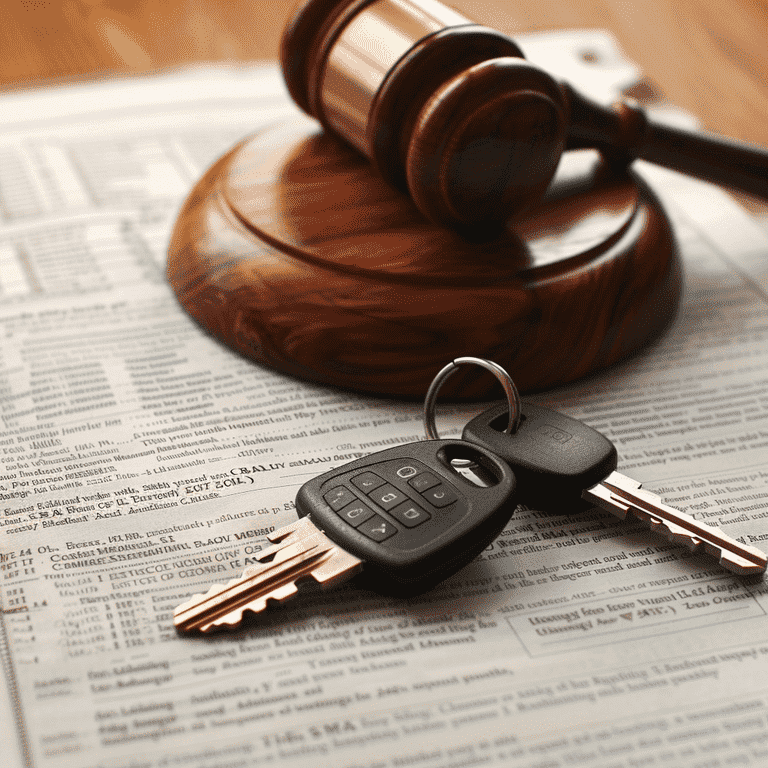
Legal Consequences of Being at Fault
If you’re found at fault in a rear-end collision, it affects more than who pays for the damage. Here’s what else to expect:
Insurance Consequences
Your insurance may have to cover repairs and medical costs. What else happens?
Rates may increase: Causing an accident usually means paying more for insurance.
Policy limits: If costs exceed your coverage, you might have to pay the difference.
Legal Issues
Serious crashes can lead to fines or even lawsuits for injuries or damages.
Insurance Rates
Expect higher insurance rates if you’re at fault. But you can:
Talk to your insurer: They might lower rates if you show new evidence.
Shop for new insurance: Other companies might offer better rates after an accident.
Paying for Damages
In lawsuits, you might have to pay:
Beyond insurance: For medical care, repairs, and pain and suffering.
Legal costs: Defending yourself in court is a costly undertaking.
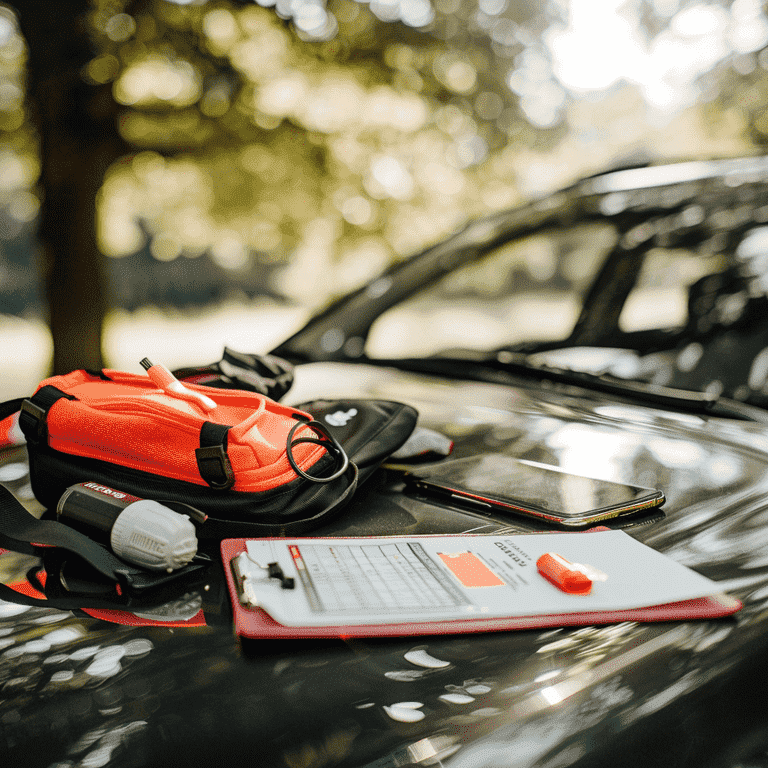
After a Rear-End Collision: Protect Yourself
Knowing what to do right after a crash can help. Follow these steps:
Check for injuries. Make sure everyone is okay.
Move to safety. If possible, move cars off the road.
Exchange info. Get contact and insurance details from the other driver.
Document everything. Take pictures of the scene, damages, and any injuries.
Find witnesses. Their accounts can be crucial.
Report the crash. Call the police to get a report.
Contact your insurance. Let them know what happened.
The Value of a Lawyer
A good lawyer can help a lot. This is especially true in complicated crashes or if you’re sued. They can:
Deal with insurance claims: To ensure you’re fairly compensated.
Represent you in court: Protecting your rights.
Choosing a Lawyer
Pick a lawyer who:
They specialize in car accidents, so they’ll know the laws best.
Has good reviews: Look for positive feedback from other clients.
Feels right: You should trust and feel confident in their abilities.
After a rear-end crash, knowing your rights and duties can make a big difference. You may need to handle insurance. You might have to hire a lawyer. Being informed will help you navigate after the accident.

Breaking It All Down
Knowing who’s at fault in a rear-end collision helps manage the aftermath with less stress. Remember, it’s not just about car repairs. It involves dealing with insurance and maybe legal issues.
Quick Recap
Fault Basics: The driver behind is usually at fault, but there are exceptions.
Evidence Matters: Use photos, witness accounts, and videos to establish fault.
Consequences: Fault affects insurance rates and legal responsibilities.
Immediate Steps: Know what to do right after an accident to protect yourself.
Legal Help: Consider hiring a lawyer for complex cases.
Driving Safely
Avoiding rear-end collisions starts with every driver. Keep these tips in mind:
Distance: Always leave enough room between you and the car ahead.
Focus: Keep your eyes on the road, not on distractions.
Adapt: Change your driving for the weather and traffic.
Maintain: Regularly check your car, especially brakes and lights.
Parting Thoughts
Dealing with a rear-end collision is scary. But, knowledge and prep can make it manageable. Stay informed and ready, prioritizing safety to lessen the chance of accidents.
Understanding fault, legal implications, and proactive measures helps you handle unexpected driving challenges. These actions safeguard your well-being and the well-being of others on the road.

Frequently Asked Questions
What should I do if the other driver doesn’t have insurance?
Report the accident to your insurance company. You may have uninsured motorist coverage to assist with your expenses.
Can I be found at fault if my car was pushed into another car in a multi-vehicle pile-up?
Fault in multi-vehicle accidents is complex and depends on the specifics of the crash and local laws. You might share some responsibility, but it varies.
What if the rear-end collision caused no visible damage?
Report the accident to the police and your insurance. Hidden damage might emerge later, and injuries can appear days after the incident.
How long must I file an insurance claim after a rear-end collision?
File as soon as possible, ideally within a few days of the accident. Time limits vary by insurance company and state law.
Can dash cam footage be used to determine fault?
Yes, dashcam footage can be crucial evidence in determining fault as it provides a clear record of the events leading up to the collision.
Is it necessary to call the police for a minor rear-end collision?
It’s advisable to call the police for any accident. A police report can be invaluable, especially if there are disputes about the crash later.
What happens if both drivers in a rear-end collision have the same insurance company?
Your insurance company will handle the claims separately, assessing each driver’s fault and damages.
Can weather conditions affect who is at fault in a rear-end collision?
Yes, weather conditions can impact fault determination as drivers are expected to adjust their driving for safety in bad weather.
What if I’m rear-ended, but I was also texting then?
The other driver may primarily be at fault, but your distraction could add to shared blame.
How does contributory negligence affect my compensation in a rear-end collision?
In states with contributory negligence laws, if you’re found slightly at fault, you might not receive compensation from the other driver.
Can I sue the other driver for personal injury after a rear-end collision?
If you’ve suffered injuries and the other driver is at fault, you can sue for compensation for medical expenses, lost wages, and pain.
What should I do if the other driver offers to pay for damages without involving insurance companies?
It’s risky to accept without official documentation. You can’t guarantee payment or coverage for hidden damages or later-emerging injuries.
How can I prove the other driver was tailgating before the rear-end collision?
Witness statements, dash cam footage, and certain road evidence can support claims of tailgating. Your lawyer can assist in gathering and presenting this evidence.
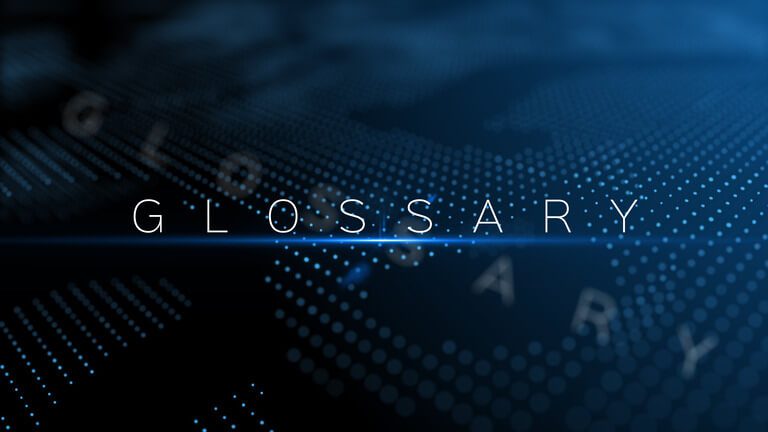
Glossary
Contributory Negligence: A legal doctrine stating that if a person contributes to their injury, they are not entitled to collect damages from another party who may have been negligent.
Comparative Negligence: A tort law principle that compares the conflicting parties’ negligence and allocates damages accordingly. If both parties are found at fault, the court determines each party’s fault percentage.
Fault: Legal responsibility for an accident or injury. Determining fault involves establishing which party’s negligence or recklessness caused the incident.
Insurance Premium: The amount of money an individual or business must pay for an insurance policy. Insurance premiums can increase after accidents where the policyholder is at fault.
Liability: A legal term for being responsible for causing damage or injury. In car accidents, the liable party is found at fault and responsible for damages.
Negligence: The failure to behave with the level of care that someone of ordinary prudence would have exercised under the same circumstances. It involves harm caused by carelessness, not intentional harm.
Personal Injury: Physical or psychological harm to a person resulting from another’s negligence or harmful act. Personal injury claims can include compensation for medical expenses, pain and suffering, and lost wages.
Policy Limits: The maximum amount an insurance company will pay for a covered loss under an insurance policy. Policy limits affect how much compensation an injured party can receive.
Tailgating: Driving too closely behind another vehicle, not allowing for a safe stopping distance. Tailgating is a common cause of rear-end collisions and is considered negligent driving behavior.
Uninsured Motorist Coverage: An insurance policy feature that protects the policyholder in case they are involved in an accident with a driver who does not have insurance. This coverage can pay for repairs, medical expenses, and other damages.
Visible Damage: Physical damage to a vehicle that can be easily seen and assessed. Visible damage is often used to determine the extent and impact of a collision.
Witness Statement: A formal account given by an individual who has seen or knows something related to an incident or accident. Witness statements can be crucial in establishing the facts of a case and determining fault.

Additional Resources for You
For those seeking further guidance and assistance, our lead attorney, Molly Rosenblum Allen, Esq., has created a suite of resources tailored to meet your needs during challenging times. Whether you’re dealing with the aftermath of a personal injury, car accident, motorcycle accident, wrongful death, truck accident, or the consequences of a drunk driving incident, or a slip and fall, we’re here to help. Explore these resources for effective advice and representation:
Las Vegas Personal Injury Attorney: Specialized support for personal injury claims to ensure you receive the compensation you deserve. Learn more.
Las Vegas Car Accident Attorney: Effective legal assistance for car accident victims, helping you navigate the complexities of your claim. Discover how we can help.
Motorcycle Accident Lawyer Las Vegas: Dedicated advocacy for motorcycle accident victims, striving for the best possible outcome. Find out more.
Wrongful Death Lawyer Las Vegas: Compassionate and comprehensive legal services for families facing the loss of a loved one due to negligence. See how we can assist.
Truck Accident Attorney Las Vegas: Effective representation for those involved in truck accidents, ensuring your rights are protected. Get started.
Las Vegas Drunk Driving Accident Attorney: Support for victims of drunk driving accidents, helping you secure justice and compensation. Explore your options.
Las Vegas Slip and Fall Attorney: Professional advice for slip and fall incidents, guiding you through the process of making a claim. Learn how we can support you.
Molly Rosenblum Allen, Esq., and our team are dedicated to providing you with the legal support you need. Explore these resources, and don’t hesitate to reach out for personalized assistance.

Outside Resources for You
American Bar Association (ABA): A comprehensive resource for finding legal assistance, understanding your rights, and accessing various legal tools. Visit ABA.
National Highway Traffic Safety Administration (NHTSA): Offers extensive information on vehicle safety, accident prevention, and recent traffic safety research. Explore NHTSA.
American Association for Justice (AAJ): Provides resources for those seeking justice in personal injury and other legal matters. Learn more at AAJ.
United States Courts: An official site that explains the federal courts system and provides insights into understanding your rights and the legal process. Check out United States Courts.
FindLaw: A comprehensive source of legal information and resources for understanding your legal issues, with tools for finding a lawyer. Discover FindLaw.
National Association of Personal Injury Lawyers (NAPIL): A directory to help you find experienced personal injury lawyers in your area. Visit NAPIL.

A Special Message from Our Lead Attorney, Molly Rosenblum Allen, Esq

Dear Reader,
Thank you sincerely for taking the time to explore the resources we’ve shared. I hope you found the information insightful and beneficial for your current needs. Knowing your rights and choices is the first step. It helps to solve any legal challenge you face.
I’m Molly Rosenblum Allen, Esq. My team and I dedicate ourselves to providing effective legal aid to those in need. If you’re ready to take action and want our professional guidance, we’re here to help. You can reach us at (702) 433-2889 to discuss your case and how we can support you moving forward.
We understand the complexities involved in legal processes. We commit to offering clear strategies. They will be direct and practical. We will tailor the strategies to your unique circumstances. We do not give free consultations. We ensure that we base every interaction with our clients on respect. We also have understanding and a strong commitment to achieving the best outcomes.
Looking forward to the opportunity to assist you,
Molly Rosenblum Allen, Esq.


